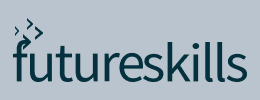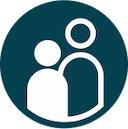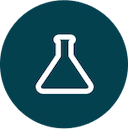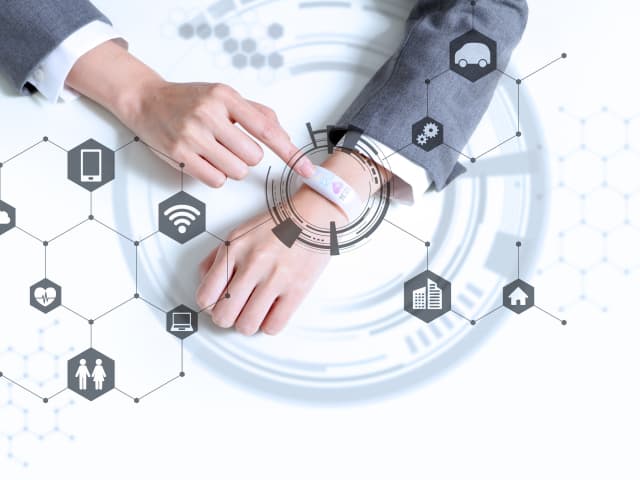Foundations of Internet of Things (IoT)
Loading...
Program

Foundations of Internet of Things (IoT)
Ready to discover how IoT can help improve your business? Learn how IoT is helping businesses discover opportunities, gain market share, improve customer satisfaction, and increase profits in this introductory course.
Self-Paced
Duration
4-6 hours/week
This course provides students with an introduction to IoT and covers the concepts, terms, and patterns of an IoT solution.
The program is divided into seven courses, each of which builds on what was covered previously. The first module focuses on what an IoT solution is and provides an introduction to the industry verticals that are using IoT to achieve business goals. In the second module, students will learn about the architectural components of an IoT solution, both on the device side and in the cloud. The third module covers the steps and approaches for evaluating and implementing IoT in your business. The final module investigates how real-world IoT solutions are being implemented in various industries and describes some of the different approaches that can be taken.
After completing this course, students will be able to identify and articulate IoT business opportunities across a broad spectrum of industries.
Before starting this course, students should have a basic idea of how cloud computing works and general understanding of what IoT is.
Program Outline
Why Learn with SkillUp Online?
We believe every learner is an individual and every course is an opportunity to build job-ready skills. Through our human-centered approach to learning, we will empower you to fulfil your professional and personal goals and enjoy career success.
Reskilling into tech? We’ll support you.
Upskilling for promotion? We’ll help you.
Cross-skilling for your career? We’ll guide you.

Personalized Mentoring & Support
1-on-1 mentoring, live classes, webinars, weekly feedback, peer discussion, and much more.

Practical Experience
Hands-on labs and projects tackling real-world challenges. Great for your resumé and LinkedIn profile.

Best-in-Class Course Content
Designed by the industry for the industry so you can build job-ready skills.

Job-Ready Skills Focus
Competency building and global certifications employers are actively looking for.
FAQs
Put simply, the Internet of Things (IoT) amounts to all the devices and sensors that monitor and interact with our environment and lives via the internet.
Examples you may be familiar with is Google Home, Alexa, and Siri. These virtual assistant devices enable users to control items such as plugs, lights, security systems, and heating through the internet. However, there are larger products such as fridges and cars that are utilizing the IoT too. Technically, devices such as phones and tablets are also part of the IoT, but reference to IoT doesnt tend to cover these. They are considered more to be related to connectivity.
The phrase, Internet of Things (IoT), came into being in 1999. It was coined by Kevin Ashton, who was preparing a presentation for senior executives at Procter & Gamble. The presentation outlined a project for optimizing the supply chain, and the internet was a hot topic at the time. Ashton was investigating the use of embedded chips in products to facilitate their tracking as they moved through the supply chain. Of course, such an innovation would require the internet, and being aware of its importance as a phrase at the time, Ashton decided to catch the executives attention by including it in his presentation title.
Once Kevin Ashton had coined the phrase in 1999, it became a hot topic in itself in the early 2010s. Companies such as Nest Labs, began creating smart devices that utilized the internet. The Nest smart thermostat was one that could be controlled remotely. Not necessarily a game-changer in itself, however tech giants such as Google and Amazon began to capture attention with their voice-activated virtual assistant style devices.
Smart Thermostats: Smart thermostats help to save money on heating costs by recognizing energy usage habits.
Connected Cars: The Internet of Things (IoT) allows automotive companies to automate billing, parking, insurance, and other related processes.
Activity trackers: Activity trackers are wristbands that allow you to monitor your heart rate, calorie expenditure, activity patterns, and body temperature.
Smart Outlets: These allow you to turn on or off any device from afar. You can monitor a device's battery life and receive personalized notifications directly to your smartphone.
Parking sensors: You can check the availability of parking spaces in real time on your cellphones thanks to IoT technology.
Connect Health: A connected healthcare system makes real-time health assessment and patient treatment easier. It aids in the improvement of medical decision-making based on patient data.
Yes, this course is 100% online; you will not be required to attend classes in person. However, you will need appropriate access to the internet and the right technology to access and use the course materials. These materials come in the form of articles, videos, and Q&A knowledge checks. The great news is, therefore, that you can take this course and earn a Certificate of Completion regardless of where you live. Plus, you can also benefit from assisted mentoring and contact with your peers via the course discussion space.
